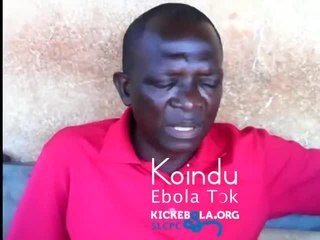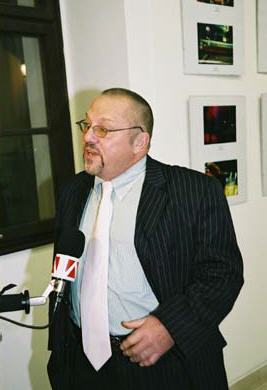
A creole language, or simply creole, is a stable natural language that develops from the process of different languages simplifying and mixing into a new form, and then that form expanding and elaborating into a full-fledged language with native speakers, all within a fairly brief period. While the concept is similar to that of a mixed or hybrid language, creoles are often characterized by a tendency to systematize their inherited grammar. Like any language, creoles are characterized by a consistent system of grammar, possess large stable vocabularies, and are acquired by children as their native language. These three features distinguish a creole language from a pidgin. Creolistics, or creology, is the study of creole languages and, as such, is a subfield of linguistics. Someone who engages in this study is called a creolist.
Shelta is a language spoken by Mincéirí, particularly in Ireland and the United Kingdom. It is widely known as the Cant, to its native speakers in Ireland as de Gammon or Tarri, and to the linguistic community as Shelta. Other terms for it include the Seldru, and Shelta Thari, among others. The exact number of native speakers is hard to determine due to sociolinguistic issues but Ethnologue puts the number of speakers at 30,000 in the UK, 6,000 in Ireland, and 50,000 in the US. The figure for at least the UK is dated to 1990. It is not clear if the other figures are from the same source.
Caribbean English is a set of dialects of the English language which are spoken in the Caribbean and most countries on the Caribbean coasts of Central America and South America. Caribbean English is influenced by but is distinct to the English-based creole languages spoken in the region. Though dialects of Caribbean English vary structurally and phonetically across the region, all are primarily derived from British English and West African languages. In countries with a plurality Indian population, such as Trinidad and Tobago and Guyana, Caribbean English has further been influenced by Hindustani and other South Asian languages.

A Spanish creole, or Spanish-based creole language, is a creole language for which Spanish serves as its substantial lexifier.
Hawaiian Pidgin is an English-based creole language spoken in Hawaiʻi. An estimated 600,000 residents of Hawaiʻi speak Hawaiian Pidgin natively and 400,000 speak it as a second language. Although English and Hawaiian are the two official languages of the state of Hawaiʻi, Hawaiian Pidgin is spoken by many residents of Hawaiʻi in everyday conversation and is often used in advertising targeted toward locals in Hawaiʻi. In the Hawaiian language, it is called ʻōlelo paʻi ʻai – "hard taro language". Hawaiian Pidgin was first recognized as a language by the U.S. Census Bureau in 2015. However, Hawaiian Pidgin is still thought of as lower status than the Hawaiian and English languages.

Portuguese creoles are creole languages which have Portuguese as their substantial lexifier. The most widely-spoken creoles influenced by Portuguese are Cape Verdean Creole, Guinea-Bissau Creole and Papiamento.

Jamaican Patois is an English-based creole language with West African, Taíno, Irish, Spanish, Hindustani, Portuguese, Chinese, and German influences, spoken primarily in Jamaica and among the Jamaican diaspora. Words or slang from Jamaican Patois can be heard in other Caribbean countries, the United Kingdom and Toronto, Canada. The majority of non-English words in Patois derive from the West African Akan language. It is spoken by the majority of Jamaicans as a native language.
A mixed language, also referred to as a hybrid language, contact language, or fusion language, is a language that arises among a bilingual group combining aspects of two or more languages but not clearly deriving primarily from any single language. It differs from a creole or pidgin language in that, whereas creoles/pidgins arise where speakers of many languages acquire a common language, a mixed language typically arises in a population that is fluent in both of the source languages.

The Sierra Leonean Creole or Krio is an English-based creole language that is lingua franca and de facto national language spoken throughout the West African nation of Sierra Leone. Krio is spoken by 96 percent of the country's population, and it unites the different ethnic groups in the country, especially in their trade and social interaction with each other. Krio is the primary language of communication among Sierra Leoneans at home and abroad, and has also heavily influenced Sierra Leonean English. The language is native to the Sierra Leone Creole people, or Krios, a community of about 104,311 descendants of freed slaves from the West Indies, Canada, United States and the British Empire, and is spoken as a second language by millions of other Sierra Leoneans belonging to the country's indigenous tribes. Krio, along with English, is the official language of Sierra Leone.

Ian Francis Hancock is a linguist, Romani scholar and political advocate. He was born and raised in England and is one of the main contributors in the field of Romani studies.
Virgin Islands Creole, or Virgin Islands Creole English, is an English-based creole consisting of several varieties spoken in the Virgin Islands and the nearby SSS islands of Saba, Saint Martin and Sint Eustatius, where it is known as Saban English, Saint Martin English, and Statian English, respectively.

Belizean Creole is an English-based creole language spoken by the Belizean Creole people. It is closely related to Miskito Coastal Creole, San Andrés-Providencia Creole, and Jamaican Patois.
Berbice Creole Dutch is a now extinct Dutch creole language, once spoken in Berbice, a region along the Berbice River in Guyana. It had a lexicon largely based on Dutch and Eastern Ijo varieties from southern Nigeria. In contrast to the widely known Negerhollands Dutch creole spoken in the Virgin Islands, Berbice Creole Dutch and its relative Skepi Creole Dutch were more or less unknown to the outside world until Ian Robertson first reported on the two languages in 1975. The Dutch linguist Silvia Kouwenberg subsequently investigated the creole language, publishing its grammar in 1994, and numerous other works examining its formation and uses.
Nagamese is an Assamese-lexified creole language. Depending on location, it has also been described and classified as an "extended pidgin" or "pidgincreole". Spoken natively by an estimated 30,000 people in the Indian northeastern state of Nagaland, it developed primarily as a means of marketplace and trade communication. Despite the official language of the state being English, Nagamese functions as a lingua franca and is spoken by nearly all Nagaland inhabitants. It is also used in mass media as well as in official state-regulated domains, including news and radio stations, education and political and governmental spheres. Nagamese is classified as a creole as, despite it being spoken as an "extended pidgin" by the majority of speakers across Nagaland, it is also spoken as the native mother tongue of the Dimasa community in Nagaland's largest city, Dimapur.
Bahamian Creole, also described as the Bahamian dialect, is spoken by both white and black Bahamians, although in slightly different forms. Bahamian dialect also tends to be more prevalent in certain areas of the Bahamas. Islands that were settled earlier or that have a historically large Afro-Bahamian population have a greater concentration of individuals exhibiting creolized speech; the dialect is most prevalent in urban areas. Individual speakers have command of lesser and greater dialect forms.
A lexifier is the language that provides the basis for the majority of a pidgin or creole language's vocabulary (lexicon). Often this language is also the dominant, or superstrate language, though this is not always the case, as can be seen in the historical Mediterranean Lingua Franca. In mixed languages, there are no superstrates or substrates, but instead two or more adstrates. One adstrate still contributes the majority of the lexicon in most cases, and would be considered the lexifier. However, it is not the dominant language, as there are none in the development of mixed languages, such as in Michif.
According to the theory of monogenesis in its most radical form, all pidgins and creole languages of the world can be ultimately traced back to one linguistic variety. This idea was first formulated by Hugo Schuchardt in the late 19th century and popularized in the late 1950s and early 1960s by Taylor (1961) and Thompson (1961). It assumes that some type of pidgin language, dubbed West African Pidgin Portuguese, based on Portuguese was spoken from the 15th to 18th centuries in the forts established by the Portuguese on the West African coast. This variety was the starting point of all the pidgin and creole languages. This would explain to some extent why Portuguese lexical items can be found in many creoles, but more importantly, it would account for the numerous grammatical similarities shared by such languages.

The Sierra Leone Creole people are an ethnic group of Sierra Leone. The Sierra Leone Creole people are descendants of freed African-American, Afro-Caribbean, and Liberated African slaves who settled in the Western Area of Sierra Leone between 1787 and about 1885. The colony was established by the British, supported by abolitionists, under the Sierra Leone Company as a place for freedmen. The settlers called their new settlement Freetown. Today, the Sierra Leone Creoles are 1.2 percent of the population of Sierra Leone.







